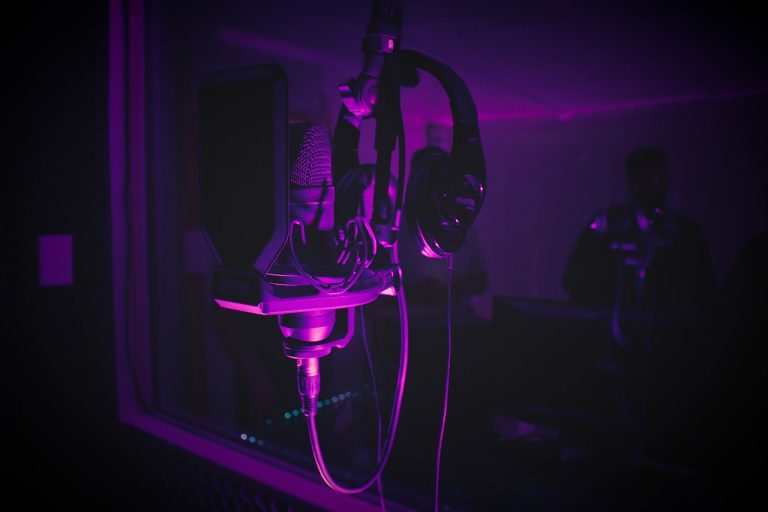
Cultural Influences: How Latin American Sounds Shape Modern Music Production
12 July, 2024Imagine a globally popular song that seamlessly blends traditional Cuban rhythms with electronic beats or a hit track that combines Brazilian samba melodies with modern pop vocals. These examples highlight how Latin American cultural influences and sounds are increasingly integrated into modern music production, resulting in diverse and unique tracks that resonate with a wide audience. This article explores how Latin American elements are woven into contemporary music, creating rich, multi-faceted audio experiences.
The Role of Latin American Influences in Music Production
Historical Context
Cultural integration in music is not a new phenomenon. Historically, trade routes, migration, and colonization have facilitated the exchange of musical traditions. Salsa, for example, is a genre deeply rooted in the cultural fusion of African rhythms and Latin American musical traditions.
Globalization and Music
In today’s interconnected world, globalization has significantly accelerated the blending of Latin American sounds with other musical styles. Advances in technology and increased travel opportunities allow artists and producers to explore and incorporate diverse cultural elements more easily than ever before. The result is a rich tapestry of sounds that reflects Latin American culture.
The Art of Mixing and Mastering with Latin American Elements
Mixing Engineers’ Techniques
Mix engineers play a crucial role in balancing different sonic elements from various Latin American cultures. They must ensure that traditional instruments and rhythms do not overpower the modern elements or vice versa. Techniques such as EQ adjustments, panning, and layering are used to create a harmonious blend of sounds.
Mastering Engineers’ Role
Mastering engineers ensure that the final mix retains its cultural integrity while sounding cohesive across all playback systems. Their job is to maintain the unique qualities of each Latin American element while polishing the overall track to meet industry standards.
Incorporating Different Sonic Elements
Identifying Important Elements
Recognizing key Latin American sounds, rhythms, and instruments is the first step in integration. This includes understanding the significance and traditional use of these elements in their respective cultures.
Integration Process
Blending Latin American elements into modern tracks involves creative and technical processes. Techniques such as sampling, sequencing, and digital manipulation allow producers to incorporate traditional sounds into contemporary frameworks.
Examples of Successful Integration
Consider Shakira’s “Waka Waka,” which incorporates African and Colombian rhythms, or Santana’s “Smooth,” which integrates Latin rock elements. These tracks exemplify how Latin American sounds can enhance modern music, making it more dynamic and appealing.
Working with Individual Recorded Instruments
Recording Techniques
Capturing the authentic sound of traditional Latin American instruments requires specific recording techniques. For instance, recording a conga involves understanding its resonance and harmonics, which differ significantly from Western instruments.
Processing and Mixing
Once recorded, these instruments need to be processed and mixed to fit within the overall track. This can involve EQ adjustments to highlight their unique frequencies or reverb to place them in a similar acoustic space as other elements in the mix.
Maintaining Authenticity
Balancing modern production techniques with traditional sounds is crucial for maintaining authenticity. Producers must respect the cultural heritage of the sounds they use while innovating within a contemporary context.
The Impact of Technology on Latin American Sound Integration
Digital Audio Workstations (DAWs)
Modern DAWs like Ableton Live and Logic Pro facilitate the integration of diverse sounds by offering a wide range of tools and features for manipulating audio. Producers can easily import and modify samples from around the world.
Sample Libraries and Plugins
The availability of Latin American sound libraries and plugins has made it easier for producers to access high-quality recordings of traditional instruments and rhythms. Libraries like EastWest’s “Ra” and Native Instruments’ “Discovery Series” provide extensive collections of global sounds.
Virtual Collaboration
Technology enables remote collaborations between artists and producers worldwide. Platforms like Splice and Soundtrap allow musicians to share projects and ideas in real-time, regardless of their physical location, fostering a more inclusive and collaborative music production environment.
In Conclusion
Latin American influences are profoundly shaping modern music production. From the historical blending of musical traditions to the contemporary integration of Latin American sounds facilitated by technology, the music industry is becoming more diverse and inclusive. As technology continues to evolve, the integration of Latin American sounds will likely become even more seamless and widespread. Future trends may include more sophisticated AI tools for sound integration, increased virtual collaborations, and greater emphasis on cultural preservation and sensitivity. Artists and producers are encouraged to explore and integrate Latin American sounds into their music. By embracing cultural diversity, they can create richer, more innovative tracks that resonate with a broader audience and contribute to the vibrant tapestry of modern music.
Follow Sounds and Colours: Facebook / Twitter / Instagram / Mixcloud / Soundcloud / Bandcamp
Subscribe to the Sounds and Colours Newsletter for regular updates, news and competitions bringing the best of Latin American culture direct to your Inbox.

